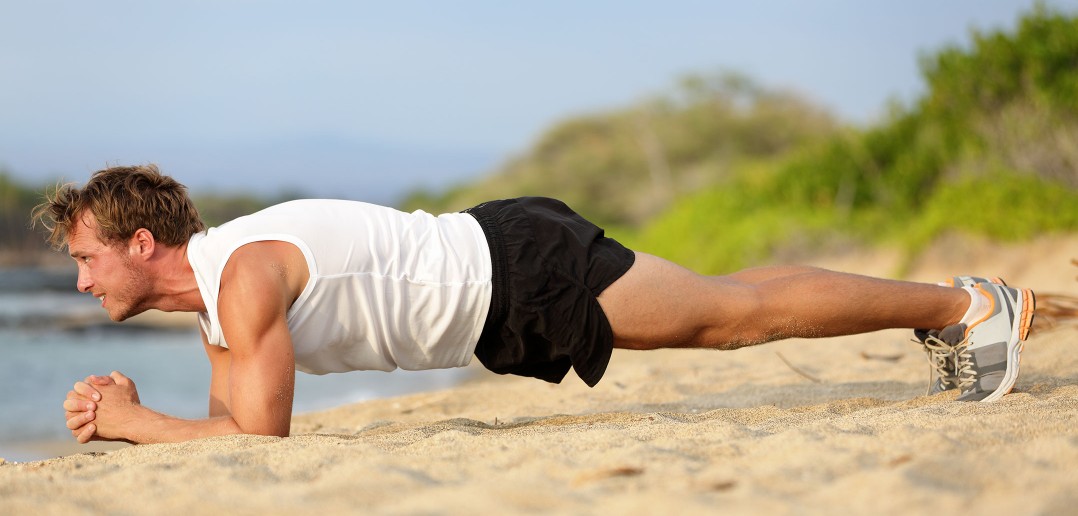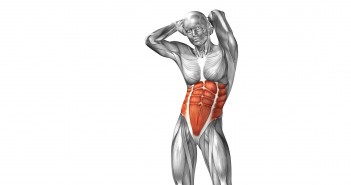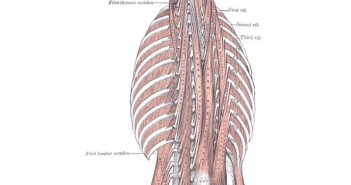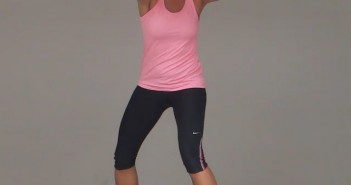The muscles of the core run the length of the trunk and torso.
The following list includes the most commonly identified core muscles as well as the lesser known groups:
- Rectus Abdominis — located along the front of the abdomen, this is the most well-known abdominal muscle and is often referred to as the “six-pack” due to it’s appearance in fit and thin individuals;
- Erector Spinae — this group of three muscles runs along your neck to your lower back;
- Multifidus — located under the erector spinae along the vertebral column, these muscles extend and rotate the spine;
- External Obliques — located on the side and front of the abdomen;
- Internal Obliques — located under the external obliques, running in the opposite direction;
- Transverse Abdominis (TVA) — located under the obliques, it is the deepest of the abdominal muscles (muscles of your waist) and wraps around your spine for protection and stability;
- Latissimus dorsi (the lats) – the widest and most powerful muscle of the back. It is a large, flat, triangular muscle covering the lower back. The action of the latissimus dorsi draws the upper arm downward and backward and rotates it inwards;
- Trapezius — the large muscle between your neck and your shoulder.
- Hip Flexors — a group of muscles that bring the legs and trunk together in a psoas major, illiacus, rectus femoris, pectineus, sartorius;
- Gluteus medius and minimus — located at the side of the hip;
- Gluteus maximus, hamstring group, piriformis — located in the back of the hip and upper thigh leg;
- Hip adductors — a group of skeletal muscles located in the thigh. Their main function is to
A Strong Core Reduces Back Pain
Abdominals get all the credit for protecting the back and being the foundation of strength, but they are only a small part of what makes up the core. In fact, it is weak and unbalanced core muscles that are linked to lower back pain. Weak core muscles result in a loss of the appropriate lumbar curve and a swayback posture. Stronger, balanced core muscles help maintain appropriate posture and reduce strain on the spine.
A Strong Core Improves Athletic Performance
Because the muscles of the trunk and torso stabilize the spine from the pelvis to the neck and shoulder, they allow the transfer of power to the arms and legs. All powerful movements originate from the centre of the body out, and never from the limbs alone. Before any powerful, rapid muscle contractions can occur in the extremities, the spine must be solid and stable and the more stable the core, the most powerful the extremities can contract.
A Strong Core Improves Postural Imbalances
Training the muscles of the core helps correct postural imbalances that can lead to injuries. The biggest benefit of core training is to develop functional fitness; the type of fitness that is essential to daily living and regular activities.
If you have any questions or comments about this or other articles on Golf Loopy, please send us an email.
You May Also Like…
Introduction to the Swing like a Champion System
Overview of a Great Golf Swing, which summarises the correct movements in a great golf swing, and describes how the core muscles help to power and stabilise the golf swing.
What Makes a Perfect Golf Swing?
Golf Swing 101. Setup: Basic Posture, which explains why good posture is good for your golf swing, and how the abdominals should be pulled in properly.
Golf Swing Drill 101. Setup: Perfect Posture and Connecting to Your Core, which describes how to achieve perfect posture, including how your abdominals should activated by pulling them in and up.
Golf Swing 102a. Setup: The Perfect Golf Stance Width
Golf Swing 102c. Setup: The Perfect Golf Weight Distribution and Balance
Golf Swing Drill 102. Setup: Perfect Golf Stance Width and Ball Position
Why is Having the Shoulders “Connected” So Important? Which explains how the shoulders enable the power of the big muscles in your legs and core to be transferred to the golf club.
Golf Anatomy and Kinesiology, a collection of articles describing the roles of the muscles involved in the golf swing.
Gluteal muscles, which describes the “glutes” — the three muscles that make up the buttocks, and how they power the golf swing kinetic chain through the core.
Kinetic Chain, which describes how the different parts of your body act to transfer energy from the ground to the golf ball.
Latissimus dorsi muscle, which describes the widest and most powerful muscle of the back, and how it is used in the golf swing.
Oblique muscles, which describes in more detail your side abdominals, which help you to bend from the side or twist your torso, and their role in the golf swing.
Psoas major muscle, which describes the hip flexors, and their role in maintaining your spine angle in the downswing.
Trapezius muscle, which describes the large muscles between your neck and your shoulders.




